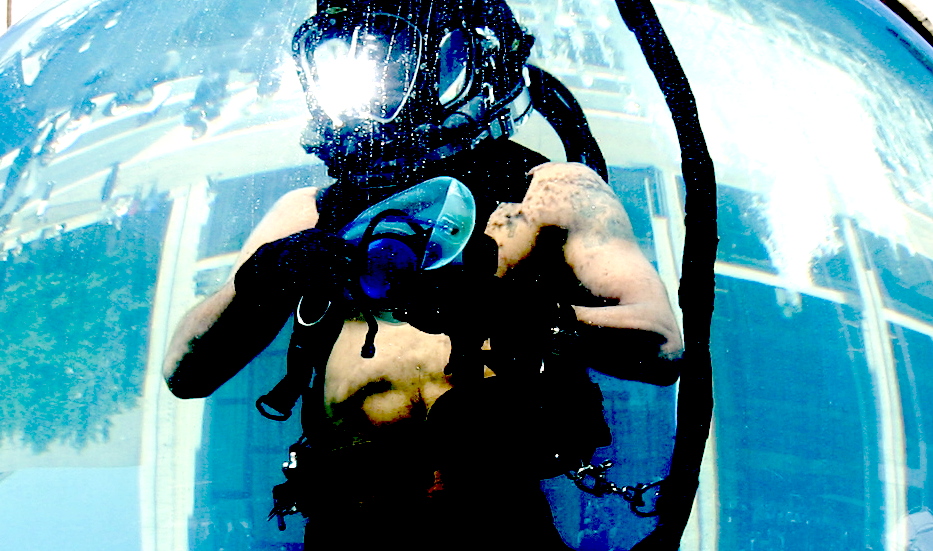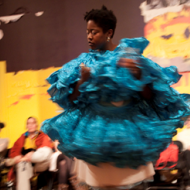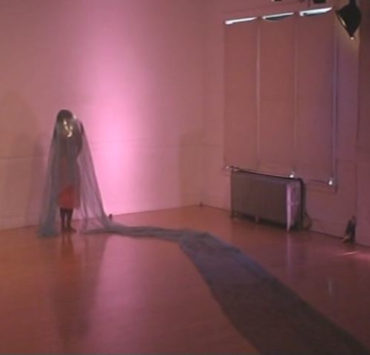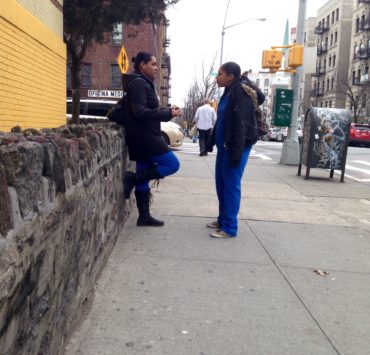
“Y
ou keep writing these complex things and insisting on doing them, and then saying you can’t do it. Why?” My friend Miré asked me with frustration. Panic.
In performance art practice, that crazy swing from hyper-confidence–If it were me, I’d rock this place, –to utter desolation–What the fuck am I going to do? I don’t have a fucking clue. Both alarming and predictable, the feeling of panic overwhelms the initial spark of creativity. It emphasizes the logistical. I’ve been accepted to the festival. The postcards are out. The date is set. I’m going to a different city to perform in a venue I barely know—and where I’ve already been rebuffed—and I have no idea what I’m doing. Panic distracts with unproductive, histrionic thoughts. There will be no performance. Those people were right—I’m not experimental. I’m not an artist. I’m just a black girl poser, an imposter, a hack!
Ah yes, panic is chattery—internally and externally. The slight chatter of your teeth from fear of failure becomes external questioning to any and all. I’m working on a piece and I have this and that, and what do you think? i.e ‘I’m LOST. What do YOU think I should do? This clamoring for answers, this grasping for straws, panic disrupts the internal stillness required to allow vision to unfold. In car factory terms, it halts the line. It shifts attention from the work to the self. Who am I to think that I can do this? It leads to “paralysis from the analysis,” turns into idleness, the worst kind of artistic self-indulgence, a spectacular waste of time.
“When one submerges oneself for so long and so deep, one wonders what one is looking for?”
I started working on my performance “heart on a sleeve” at a little bar in New York City near my friend Madhu’s apartment. It was the same day David Blaine emerged vanquished from a giant bubble of water he had set out at Lincoln Center. Blaine calls himself a magician, but I consider him a performance artist. His plan had been to stay submerged underwater for ten days. After only a few days he rushed out drenched and dripping. The New York Post headline mocked [Blaine’s Pain Magic Man Meets Waterlog Waterloo as Breath Bid Fails).
Upon being fished out from the bubble, he said on TV, “It’s been a difficult day. This was a failure, a complete and total failure.” And even in that bar, people laughed and jeered at him. I, on the other hand, was moved. While drinking a G&T (with lots of ice), I asked Madhu, “If you are submerged in water for that long, what happens to your mind and your body? Where do you go? Are you really there that whole time or is there a kind of out of body experience? And what happens if you try to get to that experience, but you don’t make it.” We talked about altered states of the body on display. And I thought there was a bravery to what David Blaine was up to—along with his usual desire to show off. And something in that combination made me think of performance art. How there’s something so outrageous and over the top that if you can pull it off, it’s amazing, but when you can’t, you become the complete subject of ridicule. My heart went out to him and his words made me think too of my own heart. What it takes to make art and also to love—submersion, immobility, holding your breath.
Before my performance, “heart on a sleeve” I had been making work under much stricter deadlines and had felt good about the process and the results. I had shown new work and was completely comfortable crashing and burning, trying new things and facing failure. I had been in my body, languorous and erotic and gloriously present, alive. Then just five months later, I was back in the void, struggling with pernicious insecurities, running smack dab into a creative block that was blowing my mind.
This was a good lesson. As an artist you’re never over the hump.
If you’re really trying to do something new, there’s always risk and stress and the possibility of failure or embarrassment. You could make 100 pieces, with 95 of them hits. Lucky you! And at the threshold of piece 101, you can still feel panic, inability, doubt. Perhaps from burn out, excess internal or external pressure. Perhaps from excess ambition, reach extends grasp. Perhaps it’s a presage of performance aftermath or even its flash recurrence. It can vary why. But those flare-ups of panic are a part of performance practice that push the artist to step back and take stock.
What are my processes? What are my rituals? How do I work?
How can I make this performance art work?
With “heart on a sleeve,” I was starting from images of David Blaine’s failed attempt to stay submerged in a giant bubble of water in New York City. I knew which elements I wanted to use—the sky blue, black graffitied fabric from my piece “after ‘Hieroglyphics’,” some romance records, hip hop, a flashlight—but I couldn’t figure out exactly how to activate and sequence these things.
I needed to give myself a start, as Lois Weaver says “wake up the room.”
I needed to recharge my internal stores, remember my faculties.
I needed to push my ego aside.
Oh yeah, I needed to ask for help.
Some artists, some people depend solely on themselves to face down panic. They are perhaps more introverted by nature. For me, asking for help is not more idle chatter. It doesn’t try to replace the internal or external work required to conceptualize and execute a performance. Instead, it allows for the aim of the work to come back into view. Other eyes help focus on gaps; other hands slap away doubts. No more spinning wheels or wallowing in anxiety. I get help snapping back into reality.
Once again I called Miré to help me pull “heart on a sleeve” together. It was an intense time for her as she was dealing with her first few months of pregnancy. Her body was changing, her life was changing and these were good, wanted changes, but she still needed support. In the midst of all of this, she agreed to help me put the piece together and break it down into manageable parts and specific actions. She also protested against some of the things I had planned to put into the show that were too explain-y. “Put that down,” she said. “That’s not what your work is about.”
The key to asking for help is asking people who really can help you, who know you well and have a sense of your aim, your aesthetics, your weaknesses and your tricks. In this way, Miré was brilliant and she did it without any big credit and certainly without payment because we were both working for free. There were things I knew that I wanted to do—booty dance to Shawna’s “Getting Some,” getting tied up in fabric and having only a tiny red heart come out—and I couldn’t even fully explain to you why. Miré took what I had and helped me forge and form it. She helped me gain confidence and direction. Even as she brought her own inimitable self to it, she helped me make my work my own.
We didn’t always agree. At one point, we had terse words about my idea to be hog-tied in the fabric. She said “It’s too dark.” She said. “That’s not what this piece is about.”
“It isn’t?” I countered. “Are you sure that we’re still talking about the piece—or are we talking about my feelings about love?” Even in our disagreements, I was able to feel calm, secure in the knowledge that someone had my back; that I was actually in the work and not in the terror of my mind.
Rarely in my practice have I proceeded completely alone from the spark of conception to the final performance. My artist colleagues and friends have offered me their challenges, conversation and support. This camaraderie, an indispensable boon, an antidote for performance panic.
image: David Blaine, ‘Drowned Alive’ at Lincoln Center in New York by Luijt

Gabrielle Civil is a black feminist poet, conceptual and performance artist, originally from Detroit, MI. In summer 2014 she premiered “_____ is the thing with feathers” and reprised “Say My Name” (an action for 270 abducted Nigerian girls) at “Call & Response,” an innovative two-part festival of black women and performance that she organized at Antioch College. Other recent work includes: “Fugue (Da, Montréal)” at the Hemispheric Institute Encuentro in Montreal, Canada (June 2014); “Aide-mémoire,” at the AFiRiperFOMA Biennial in Harare, Zimbabwe (Nov. 2013); and a restaging of John Cage’s “How to Get Started.” Gabrielle is currently circulating Swallow the Fish, her critical/creative text on black feminist performance art practice. She is Associate Professor of Performance at Antioch College in Yellow Springs, OH. The aim of her work is to open up space. www.gabriellecivil.com







